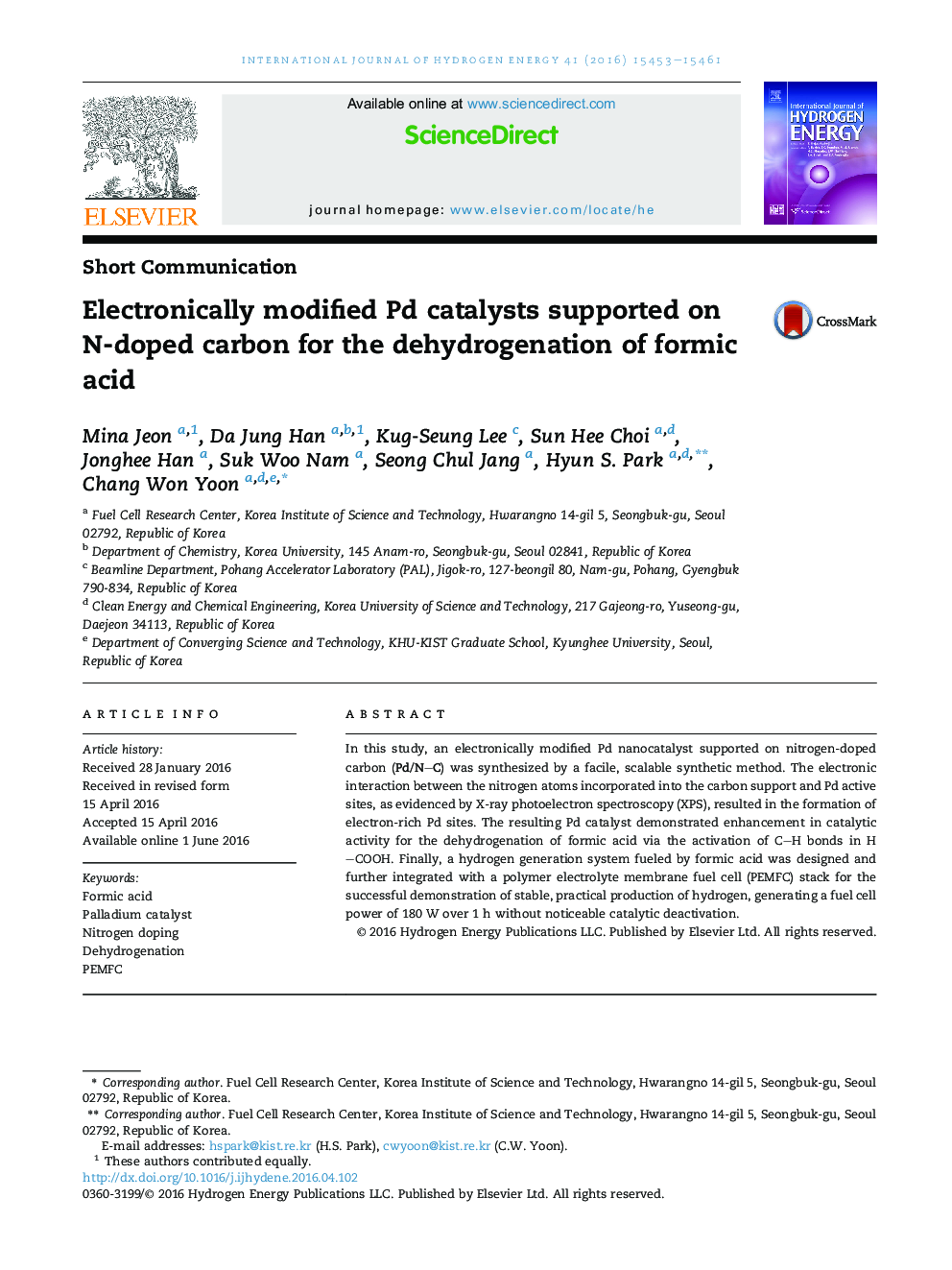| Article ID | Journal | Published Year | Pages | File Type |
|---|---|---|---|---|
| 1270425 | International Journal of Hydrogen Energy | 2016 | 9 Pages |
•Efficient formic acid (FA) dehydrogenation is demonstrated using Pd nanocrystals.•Electronically modified Pd/N–C catalysts are synthesized by a scalable method.•Nitrogen atoms doped to carbon enhance the metal-support interactions of Pd/N-C.•FA dehydrogenation system is employed to power a 200 W PEMFC over 1 h.
In this study, an electronically modified Pd nanocatalyst supported on nitrogen-doped carbon (Pd/N–C) was synthesized by a facile, scalable synthetic method. The electronic interaction between the nitrogen atoms incorporated into the carbon support and Pd active sites, as evidenced by X-ray photoelectron spectroscopy (XPS), resulted in the formation of electron-rich Pd sites. The resulting Pd catalyst demonstrated enhancement in catalytic activity for the dehydrogenation of formic acid via the activation of C–H bonds in H–COOH. Finally, a hydrogen generation system fueled by formic acid was designed and further integrated with a polymer electrolyte membrane fuel cell (PEMFC) stack for the successful demonstration of stable, practical production of hydrogen, generating a fuel cell power of 180 W over 1 h without noticeable catalytic deactivation.
